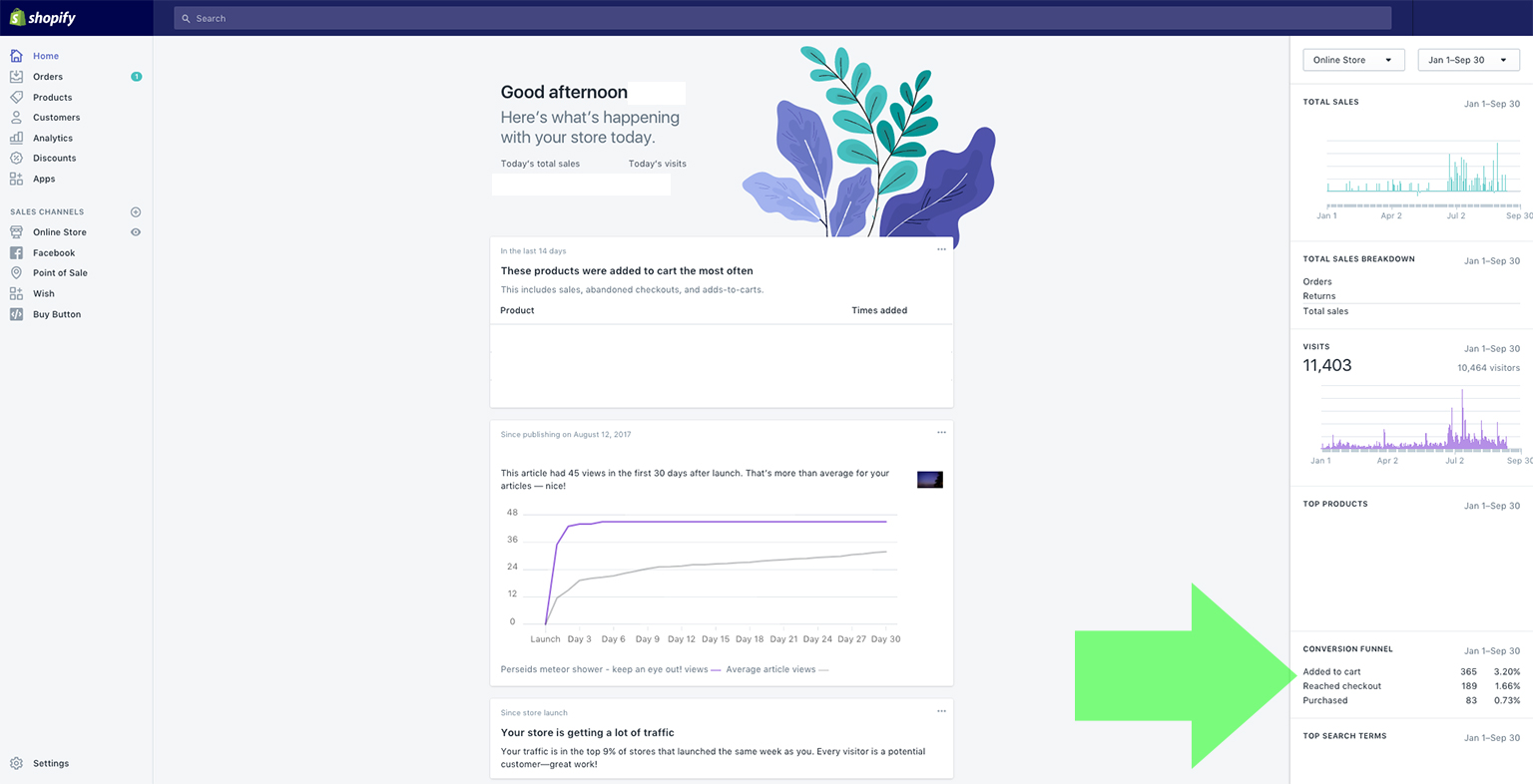Conversion Rate Optimisation: How To Know Your Expert Is The Real Deal
Imagine increasing your annual turnover by 10% within 3 months – without hiring new staff or spending more money on advertising. It’s not unheard of for businesses to triple their site conversion rates within a year of beginning CRO programmes.
That’s why Conversion Rate Optimisation (CRO) has become somewhat of a hot topic in the e-commerce community lately. But what are the risks of taking on a CRO consultant without understanding the concept and its process?
Written By
Hannah Smiddy

What is conversion rate optimisation?
Let’s start by defining the basics. If you use Shopify as the platform for your online store, you may have spotted a section on the dashboard called the ‘conversion funnel’. This tracks interactions with the pages in your conversion funnel and displays the percentage of visitors who have taken a desired action. For example, this can be adding a product to cart.

Conversion Rate Optimisation (CRO) can broadly be described as critically evaluating your customers’ journey and finding ways to improve it. It identifies steps to increase the number of visitors who take the desired action on your website; your ‘conversion rate’.
What does this mean? If you have 1 sale for every 100 visitors to your site, your conversion rate is 1%. With Conversion Rate Optimisation, you find ways to make 2 sales per every 100 visitors – increasing your conversion rate to 2%. This may sound like a small number, but it would double your revenue. CRO is basically an effective way for you to turn website traffic into turnover.
However, the effectiveness of your CRO is dependent on good quality data. Firstly, it is essential to analyse data to identify which problems to solve on your website. Secondly, only the correct testing process will result in reliable data to base your website changes on. Otherwise, all you are doing is making changes to your site based on nothing but educated guessing. This could instead cost your business its profits.
Testing is a vital part of CRO, and all CRO strategies rely on a system of split-testing or ‘A/B testing’ to inform decision making and ensure your hypotheses are data-drive. A/B is the process of scientifically testing your existing web page (the ‘baseline’) to a version where the design has been tweaked slightly (a ‘variant’). By evenly diverting traffic between the two versions, you can establish which is the better performer for conversion. Find out more in our introduction to split testing.
A tip! Before you commence testing, comparing your visitor’s buyer-intent with your conversion rate will shed a light on the potential profit slipping through your fingers.
Stay out of risky business
With that in mind, the heap of buzz for this service doesn’t come without risk. When looking into hiring someone to assist you, there will be several unscrupulous consultants who consider themselves experts. They can be making promises without using proven techniques, and without basing their recommendations on reliable data.

We have therefore developed a series of educational articles to ensure you understand the fundamentals of CRO. This will let you grasp how testing is planned, structured, actioned and analysed. Most importantly, it will help you get the real deal when signing a contract.
Although this service comes with the potential for truly massive rewards, conversion rate optimisation is not a ‘one-size-fits-all’ solution. There is simply no best practice for e-commerce. But, there are a few tips to make you wiser when choosing the right consultants to work with.
Let’s be realistic; between the cost of analytics setup, consulting charges, testing software, design and development services, good-quality CRO is not cheap. But choosing price over quality may cost your business in the long-run. Going for the wrong expert means you are not reaching your highest potential conversion rate. Investing in quality services will increase your long-term profits and maximise your return on investment. So, when preparing to invest in a CRO programme, how can you weed out the fake experts from the real deal?
#1 They are realistic with traffic and timelines
If the expert you are talking to doesn’t consider your monthly traffic when making recommendations, there is reason to be wary.

The speed at which a test can be a statistically proven a ‘winner’ (the result to base your website changes on) all comes down to traffic levels on the tested page. If you have less than 100,000 monthly visitors, there is not enough traffic to receive fast and reliable test results. You can still do it, but you will be running expensive tests for a long time in order to reach the correct level of data reliability. You should also consider that not all tests are going to be winners.
If you’ve got high volumes of traffic, new tests can be run weekly. If every second test results in a 2% increase in conversion rate, your stores’ revenue can improve rapidly.
However, be wary if agencies are approaching you with pie-in-the-sky forecasts and guarantees. They may be hoping to cash-in on your lack of understanding for CRO. At the same time, don’t dismiss agencies out of hand. Some may contact you because they see unrealised potential to grow your business with CRO. Just make sure they are transparent and realistic when it comes to targets, timelines and traffic needs.
#2 They have the correct approach
What should the approach look like when a team of genuine experts come to the table? The best way to assess consultants is by judging the amount and quality of questions asked.
Consultants should ask questions to paint a clear picture of your strategic position. This should cover goals, unique selling points, annual turnover, monthly site traffic, return rates, bounce rates, down time, cost-to-serve and inventory levels. They will then run an analytics programme for 2-3 months to uncover the following:
- Where visitors ‘fall out’ of your sales funnel
- Your sites average cart value
- Your cart abandonment rate, and its reasons
- Which channels and activities drive the highest amount of traffic to your site
- Which channels generate traffic with a buyer-intent
- Which geographic segments make up the majority of your traffic
- Your customers’ intentions when arriving at your site
- What is preventing customers from making a purchase
- Your return rate and the reasons for it
- Your conversion rate per device, e.g. phone or desktop
What true experts will appreciate is that there is no certain answer to any of these questions. To quote popular culture; “You know nothing, Jon Snow.”
Every website comes with a different brand, proposition, layout and conversion rate. What works for one website will not work for another. Applying ‘best practice’ CRO testing is like flinging expensive mud at a wall, hoping it sticks. So if your expert lacks the right approach, show them the door (and make sure they take their mud with them).
#3 They follow the right process
The real work begins once your consultant has an overview and understanding of your strategic position. A good process will then look like the following:

1. They analyse data
This phase is all about collecting granular data. As mentioned, the consultant will analyse your site traffic and map out key user journeys. They should then analyse your pages through heat and scroll-maps, set up exit surveys, record customer interactions and conduct interviews. Doing this will identify numerous issues that may prevent your visitors from converting.
2. They identify common issues
It’s important to validate the issue(s) by looking at multiple data sources. This allows you to establish how often an issue impacts your visitors and with what level of severity. For example, you may have a low add-to-cart rate from your product pages and a heat map showing low clicks on the add-to-cart button. On top of this, your scroll map data may be indicating that visitors aren’t scrolling to interact with the add-to-cart button. Hence, we have several data sources pointing towards a common issue.
3. They prioritise issues based on commercial value
Once your constant have identified your issues, they will prioritise them in a priority matrix. This matrix takes into account the commercial value of each issue and the expected ease with which it can be resolved. The issue with the highest commercial value and ease of solution will be prioritised in your ‘testing roadmap’. A testing roadmap is basically a schedule of tests that your consultant will work through in 3-month blocks. After this point, they will review and prioritise your next tests.
4. They develop hypotheses and goal metrics
After establishing your testing roadmap, they will develop a hypothesis for their first test. They will also decide on a goal metric to measure the success of your test, which should be confirmed by you prior to commencing. A single test may have multiple goals, but should always have a primary objective.
5. They begin testing
The next step is to create tests that address the hypothesis to the utmost degree. For instance, if your hypothesis is that people are being distracted during the check-out process, your test should include removing as many distracting elements from the check-out page as possible. After following these steps, your tests are ready to ‘go live’ on your website.
#4 They understand and learn from failure
If a test is over and it hasn’t made much of a difference to your conversion rate, does that make it a failure?
Not necessarily. Often a test will convert well with a particular market segment, but poorly overall. For instance, it may show a 20% uplift in conversion rate for men under 30 years old. However, because your test isn’t resonating with the other segments, it will be a failed test for all traffic segments combined. Taking the time to fully analyse your results before declaring a failed test, prevents throwing good results and learnings in the bin. You can learn just as much from a failing test as a successful one.
There are other factors that may contribute to a failing test. These can include changes in stock availability, payment gateway failures, changes to your store layout or changes to traffic levels and composition. For example, a change in traffic level may happen due to you running a seasonal marketing campaign. Be careful with making assumptions on what can skew your data, but be transparent and contribute to the conversation with your consultant.
#5 They are frank with what type of problems they can address
There are many areas where CRO can help you. To help ensure you are approaching a consultant for the right reasons, we’ve listed some common problems they can address:
- They can identify ways of building trust for your brand. For example, you could run tests on how to make your store look more secure at check-out.
- Your consultant should be familiar with tactics for increasing your average order value. For example, a test that can make customers add extra products to their cart by offering an increasing discount per item added to cart.
- Tests can help you generate sign-ups to newsletters by optimising the way you are communicating its benefits. The same applies to reward programmes; perhaps your website isn’t effectively promoting motivations for customers to stay loyal?
However, keep in mind that good testing starts with identifying the problem – not the solution. It is vital to hire a consultant who uses data to identify your problems. Solutions, like the ones listed above, can then be brainstormed with your CRO expert.
With these considerations in mind, you have encountered the basics of CRO. We hope you will enjoy our blog series, in which we strive to provide you with the knowledge necessary to make confident decisions for your e-commerce store.

